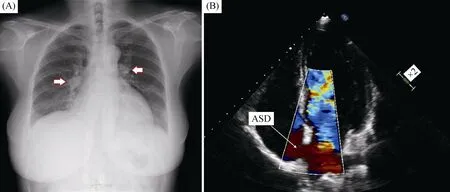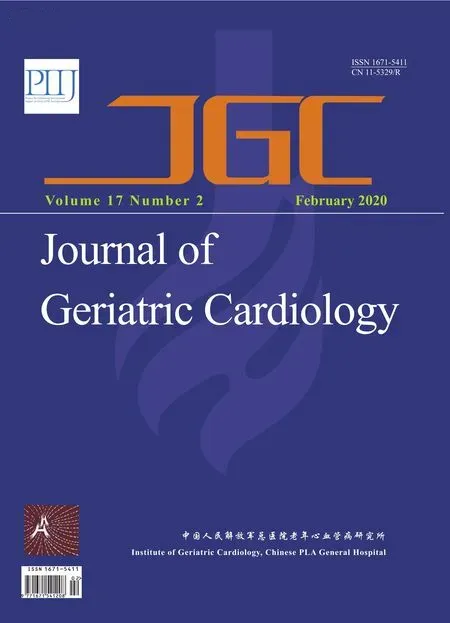Diagnostic chest X-ray in atrial septal defects
Gianluca Rigatelli, Marco Zuin
1Cardiovascular Diagnosis and Endoluminal Interventions Unit, Rovigo General Hospital, Rovigo, Italy
2Section of Internal and Cardiopulmonary Medicine, Department of Medical Science, Faculty of Medicine, University of Ferrara, Ferrara, Italy
Keywords: Atrial septal defect; Fleischner’s sign; Pulmonary arterial hypertension
A 66-year-old woman with lower limb edema and exertional dyspnea presented to the emergency department. Posteroanterior chest X-ray revealed a Fleischner’s sign in both lungs (Figure 1A) suggesting a pulmonary hypertension. A subsequent transthoracic echocardiogram revealed a 24 mm diameter secundum atrial septal defect (ASD) (Figure 1B) with a dilated right heart and a mean pulmonary pressure of 68 mmHg. Fleischner’s sign refers to a prominent central pulmonary artery that can be commonly caused either by pulmonary hypertension or acute pulmonary embolism. This radiological finding is very rare in patients with secundum ASD unless the defect remains undiagnosed till the elderly. Chest X-ray remains fundamental in making diagnosis of cardiovascular disease.

Figure 1. Fleischerner’s sign in both lungs of a patient with secundum ASD.
 Journal of Geriatric Cardiology2020年2期
Journal of Geriatric Cardiology2020年2期
- Journal of Geriatric Cardiology的其它文章
- Short-term efficacy of unibody single-branched stent in the treatment of lesions involving the left subclavian artery: two-year follow-up outcomes
- Is it better to choose immediate dialysis treatment for renal transplant patients after PCI?
- A novel treatment of refractory coronary embolism: thrombus aspiration catheter-assisted twisting wire technique
- MicroRNA-29a attenuates angiotensin-II induced-left ventricular remodeling by inhibiting collagen, TGF-β and SMAD2/3 expression
- Beneficial effects of moderate to vigorous physical activity on cardiovascular disease among Chinese adults
- Atrial fibrillation among Russian men and women aged 55 years and older: prevalence, mortality, and associations with biomarkers in a population-based study
